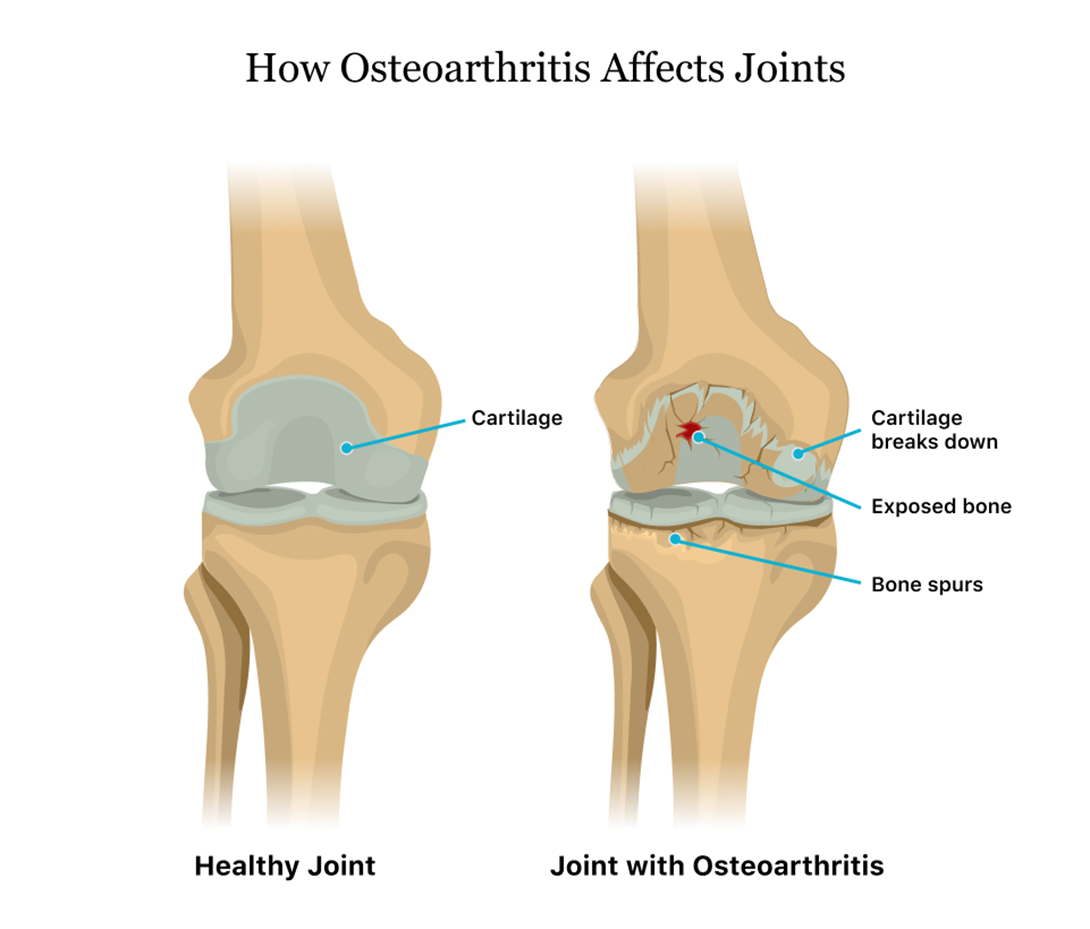An older adult client with symptoms of osteoarthritis asks the nurse which form of exercise would be most beneficial. Which is the best response by the nurse?
Jogging or running are excellent aerobic exercises.
Tennis or racquetball will increase your muscle strength.
Limit your exercise to just your daily activities.
Swimming is an excellent exercise for you.
The Correct Answer is D
Choice A reason: Jogging or running are not excellent aerobic exercises for an older adult client with osteoarthritis. These activities can put a lot of stress and impact on the joints, especially the knees, hips, and ankles, which can worsen the pain and inflammation of osteoarthritis. The nurse should advise the client to avoid high-impact exercises that can damage the cartilage and bones.
Choice B reason: Tennis or racquetball are not ideal exercises for an older adult client with osteoarthritis. These activities involve sudden movements, twists, and turns that can strain the joints, especially the elbows, wrists, and shoulders, which can aggravate the symptoms of osteoarthritis. The nurse should advise the client to avoid exercises that can cause joint instability and injury.
Choice C reason: Limiting the exercise to just the daily activities is not a good advice for an older adult client with osteoarthritis. Exercise is important for maintaining joint health, mobility, and function, as well as preventing muscle loss, obesity, and cardiovascular diseases. The nurse should encourage the client to engage in regular moderate exercise that can improve the quality of life and reduce the complications of osteoarthritis.
Choice D reason: Swimming is an excellent exercise for an older adult client with osteoarthritis. Swimming is a low-impact aerobic exercise that can strengthen the muscles, improve the cardiovascular fitness, and enhance the flexibility of the joints without putting too much pressure or stress on them. Swimming can also reduce the pain and stiffness of osteoarthritis by providing a soothing and relaxing effect on the body. The nurse should recommend swimming as a safe and effective exercise for the client.
Nursing Test Bank
Naxlex Comprehensive Predictor Exams
Related Questions
Correct Answer is D
Explanation
Choice A reason: Canned vegetables with additional table salt are not a good choice for someone with cholecystitis, because they are high in sodium, which can increase fluid retention and inflammation. However, this choice is not eliminated by the client, so it does not indicate successful teaching.
Choice B reason: Pasta with herbal butter and no meat sauce is a good choice for someone with cholecystitis, because it is low in fat and protein, which can trigger gallbladder contractions and pain. This choice is not eliminated by the client, so it does not indicate successful teaching.
Choice C reason: Citrus fruit and melon with a salt substitute are also good choices for someone with cholecystitis, because they are high in vitamin C and water, which can help dissolve gallstones and prevent infection. This choice is not eliminated by the client, so it does not indicate successful teaching.
Choice D reason: Whole milk and daily servings of ice cream are bad choices for someone with cholecystitis, because they are high in fat and cholesterol, which can worsen gallbladder inflammation and increase the risk of gallstone formation. This choice is eliminated by the client, so it indicates successful teaching.
Correct Answer is A
Explanation
Choice A reason: Returning for periodic liver function studies is an important instruction for a client with gouty arthritis who is taking colchicine and indomethacin. These medications can cause liver toxicity, which can manifest as jaundice, abdominal pain, nausea, vomiting, and dark urine. The nurse should advise the client to monitor for these signs and symptoms, and to have regular blood tests to check the liver enzymes and function.
Choice B reason: Massaging joints to relax muscles and decrease pain is not a recommended instruction for a client with gouty arthritis who has acute inflammation of the right ankle and great toe. Massage can increase the blood flow and pressure to the affected joints, which can worsen the pain and swelling. The nurse should advise the client to avoid touching or moving the inflamed joints, and to apply ice packs or cold compresses to reduce the inflammation.
Choice C reason: Limiting use of mobility equipment to avoid muscle atrophy is not a necessary instruction for a client with gouty arthritis who has acute inflammation of the right ankle and great toe. Mobility equipment such as crutches, walkers, or canes can help the client to ambulate safely and comfortably, and to prevent further injury or damage to the affected joints. The nurse should encourage the client to use mobility equipment as needed, and to perform gentle range of motion exercises when the inflammation subsides.
Choice D reason: Substituting natural fruit juices for carbonated drinks is not a helpful instruction for a client with gouty arthritis who is taking colchicine and indomethacin. Fruit juices can contain high amounts of fructose, which can increase the uric acid levels in the blood and trigger gout attacks. Carbonated drinks are not a major risk factor for gout, unless they contain high-fructose corn syrup or alcohol. The nurse should advise the client to drink plenty of water, and to avoid foods and beverages that are high in purines, such as organ meats, seafood, beer, and wine.
Whether you are a student looking to ace your exams or a practicing nurse seeking to enhance your expertise , our nursing education contents will empower you with the confidence and competence to make a difference in the lives of patients and become a respected leader in the healthcare field.
Visit Naxlex, invest in your future and unlock endless possibilities with our unparalleled nursing education contents today
Report Wrong Answer on the Current Question
Do you disagree with the answer? If yes, what is your expected answer? Explain.
Kindly be descriptive with the issue you are facing.
